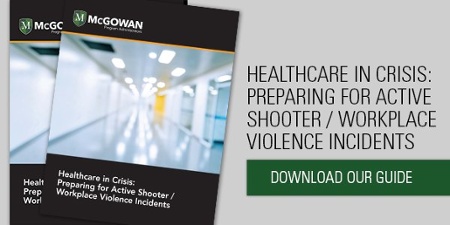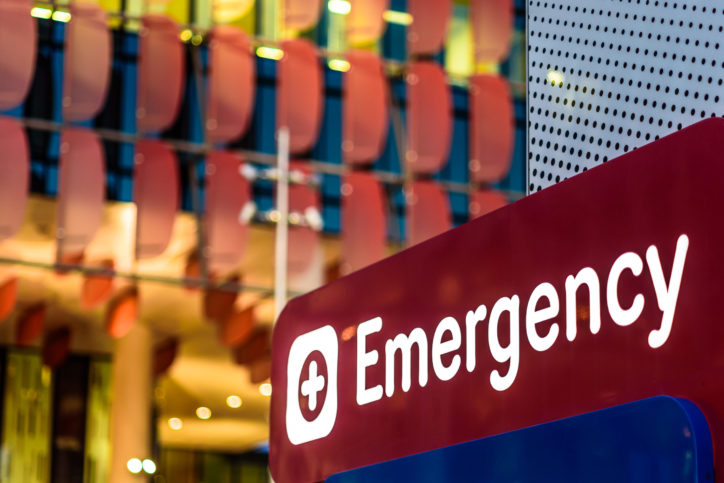Today’s hospitals are prepared with protocols and procedures to handle gunshot wounds and have hospital insurance to deal with lawsuits. The unfortunate rise in mass shootings in the United States has led hospital staff to practice simulation drills to prepare personnel for when a tragic event occurs.
But are your hospital administrators and staff members ready for an active shooter incident inside your healthcare facilities or on the grounds? Is hospital leadership prepared for the aftermath?
The problem with standard hospital insurance coverage
Because a majority of health system buildings are open to the public, they are much more vulnerable to active shooter events than other commercial facilities. Especially in a hospital’s emergency department, the environment can be volatile as staff members work to treat people with severe illness and injuries while often dealing with contentious or hostile patients, friends, or family members. Considering these factors, along with the steady increase in active shooter incidents across the U.S., hospital leadership teams need to make sure the hospital is covered in a worst-case scenario.
The reality, unfortunately, is that many standard insurance policies don’t provide coverage for an active shooter incident. When factoring in items like victim and family settlements, an event crisis response team, victim counseling, funeral expenses, and increased security, costs can add up quickly.
The dangers of inadequate coverage
Hospitals face substantial risk from civil liability if they do not have additional coverage for active shooter incidents. In some healthcare organizations, active shooter incident insurance and training are put off or neglected by administrators. Many believe an event will not happen at their facilities. If a hospital fails to implement training and secure proper coverage, the organization can be held liable for injuries and fatalities. They can also suffer irreparable damage to their reputation.
What Active Shooter Insurance Covers
Active shooter insurance eliminates all the gray areas in a standard hospital system insurance policy. When filing a claim, active shooter insurance typically covers:
- Damages to the hospital
- Monetary settlements to victims
- Medical treatment for victims
- Funeral expenses
- Counseling services
- Crisis management team expenses
In addition to getting the right coverage, hospital administrators need to understand definitions and stipulations within the policy. Essential questions to ask are:
- How does the policy define an active shooter incident?
- What is considered an incident? Does the policy define a certain amount of damage or a specific number of people affected?
- Which crisis response services are covered?
 hbspt.cta.load(49319, ‘981624c9-c4a6-4442-aa58-43ba3a25a300’, {});
hbspt.cta.load(49319, ‘981624c9-c4a6-4442-aa58-43ba3a25a300’, {});
Does your hospital have Active Shooter / Workplace Violence Insurance?
When out-of-pocket fees and settlements can reach millions of dollars, like the $58 million sought by a victim’s family in the 2015 San Bernardino shooting at the Inland Regional Center, hospital leaders need to protect their organizations with active shooter insurance.
Paul Marshall, McGowan’s director of Active Shooter/Workplace Violence programs, emphasizes the value of auditing security features, assessing vulnerabilities, and developing a plan to mitigate the risks these processes expose. Policyholders can receive a discount of up to 20% off their premiums if they complete these audits and assessments. Get a quote.


